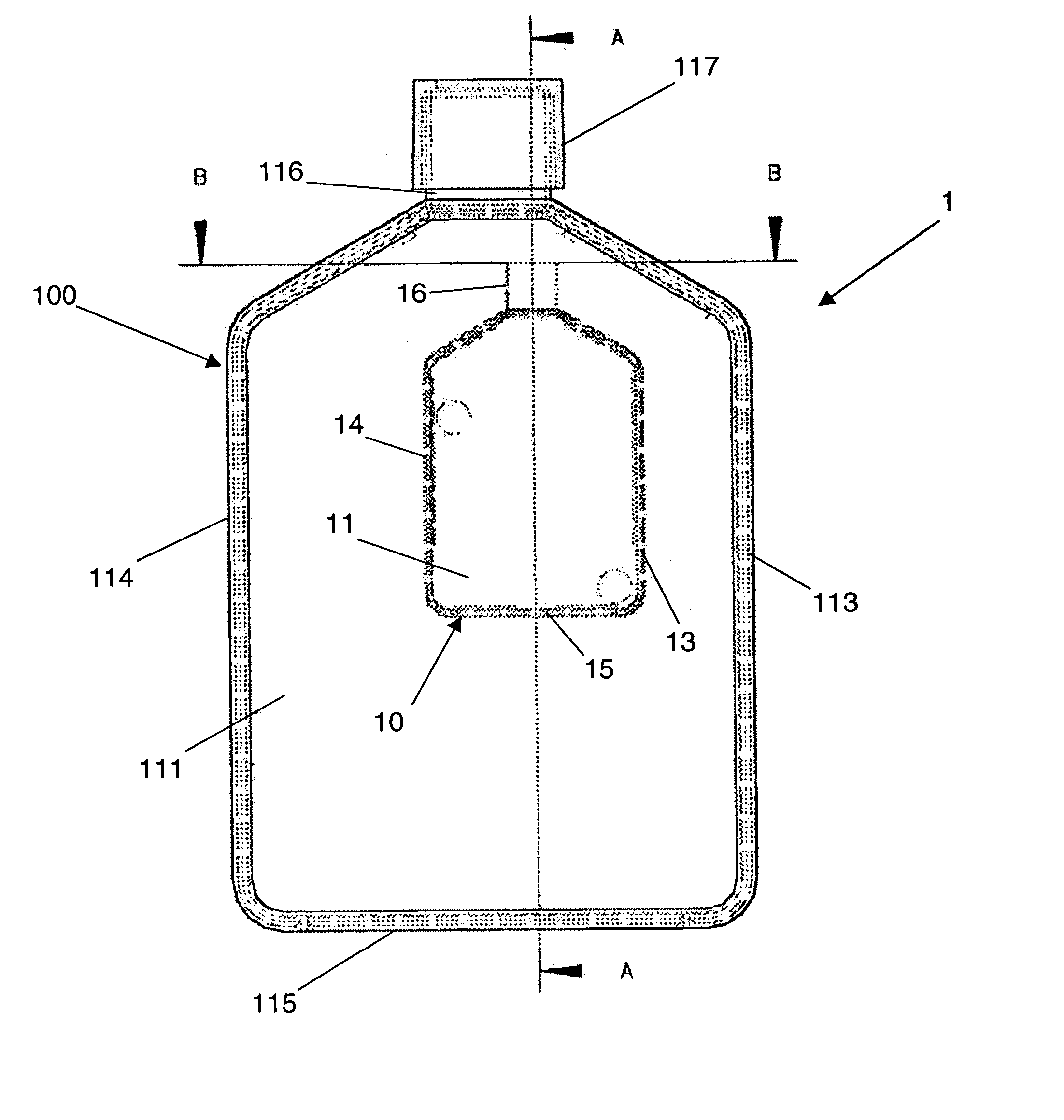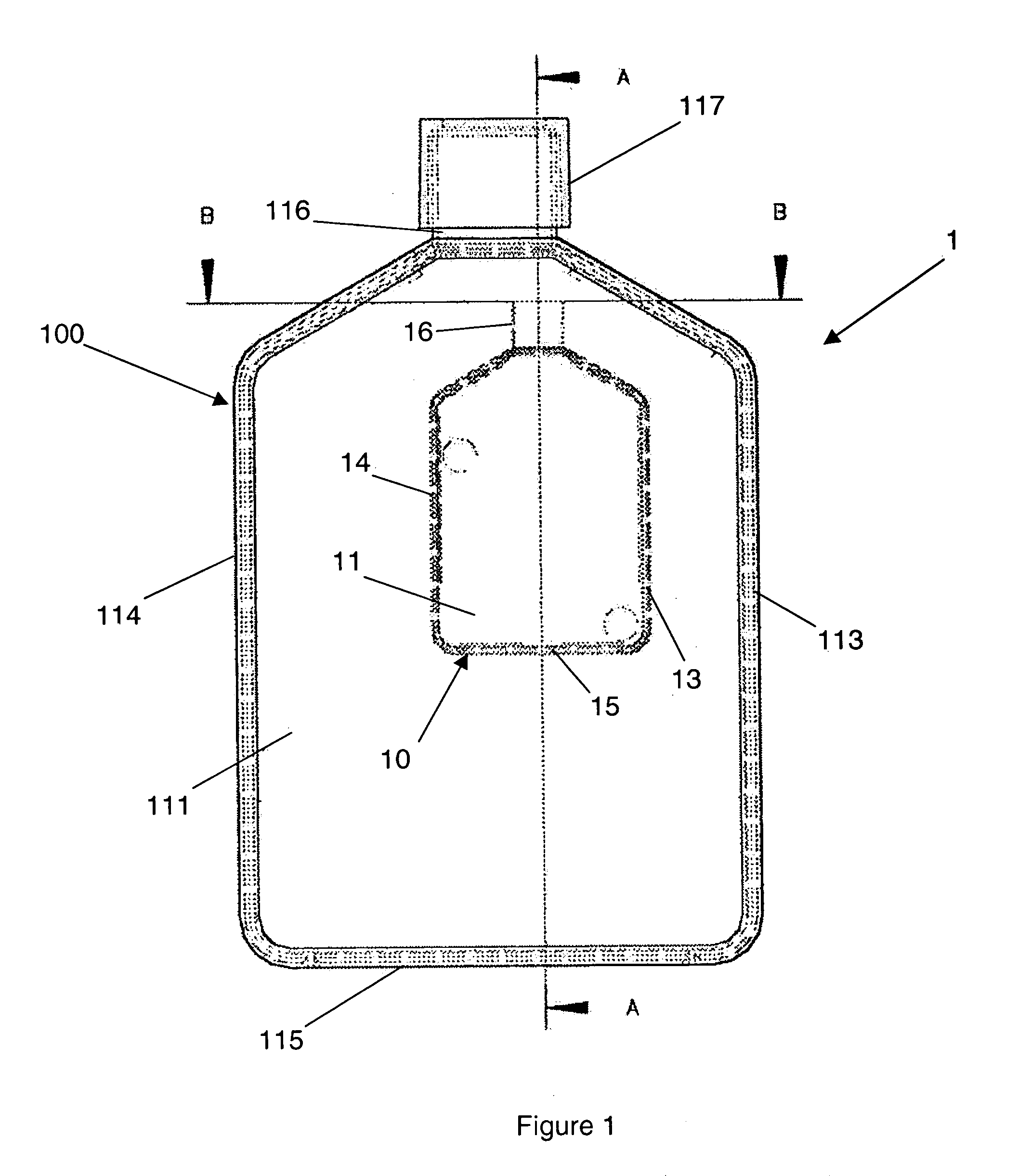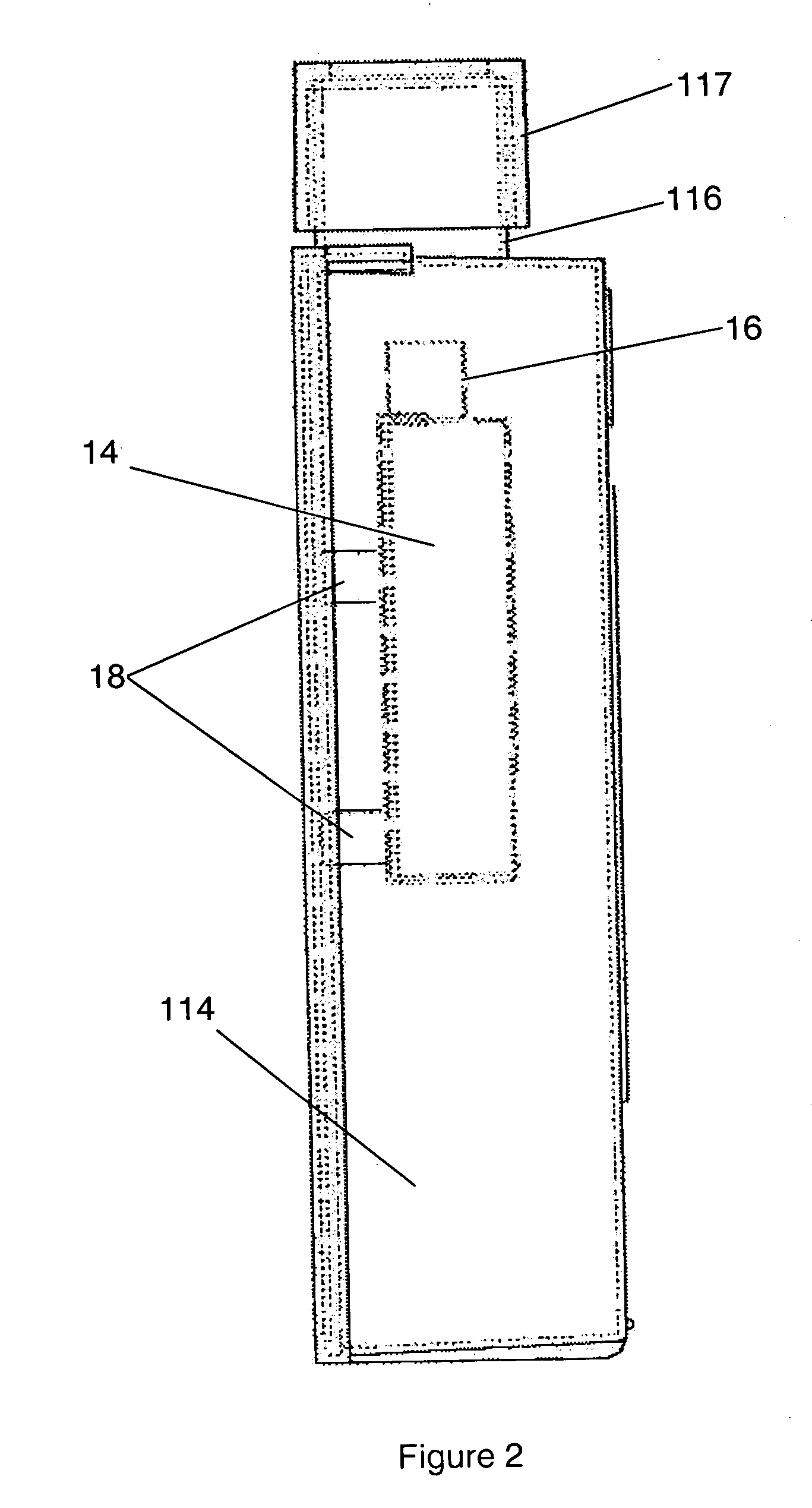Cell culture device
- Summary
- Abstract
- Description
- Claims
- Application Information
AI Technical Summary
Benefits of technology
Problems solved by technology
Method used
Image
Examples
Embodiment Construction
[0025]FIG. 1 shows a first example of a cell culture device 1 according to the present invention. Within the internal volume of the culture device 1 there is provided a smaller flask 10 in which cells may be cultured. The flask 10 consists of are four orthogonal walls 11, 12, 13 and 14 and a base 15. There are two major walls 13 and 14 and two minor walls 11 and 12. Above the four orthogonal walls 11 to 14 the walls of the flask 10 converge to meet at a neck portion 16. The narrowing of the flask 10 at the neck portion 16 ensures that the contents of the flask 10 remain within the flask 10. The neck 16 could screw threaded and may co-operate, in use, with a cap 17 to seal the contents of the flask from the ambient atmosphere and also from the contents of the cell culture device 1. The use of a cap 17 to close the smaller flask 10 is only appropriate in some applications as a result of potential contamination of the sample held within the flask 10. In order to overcome this problem a...
PUM
 Login to View More
Login to View More Abstract
Description
Claims
Application Information
 Login to View More
Login to View More - R&D
- Intellectual Property
- Life Sciences
- Materials
- Tech Scout
- Unparalleled Data Quality
- Higher Quality Content
- 60% Fewer Hallucinations
Browse by: Latest US Patents, China's latest patents, Technical Efficacy Thesaurus, Application Domain, Technology Topic, Popular Technical Reports.
© 2025 PatSnap. All rights reserved.Legal|Privacy policy|Modern Slavery Act Transparency Statement|Sitemap|About US| Contact US: help@patsnap.com



